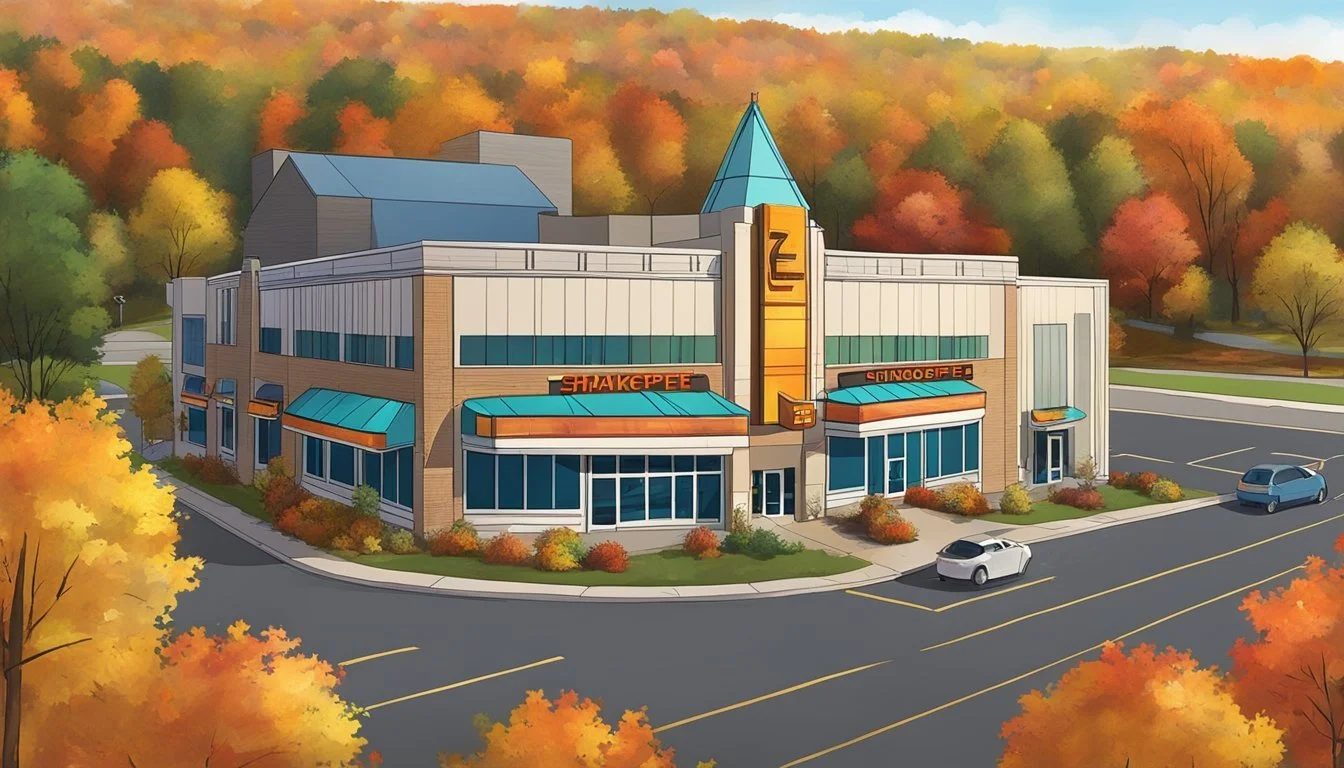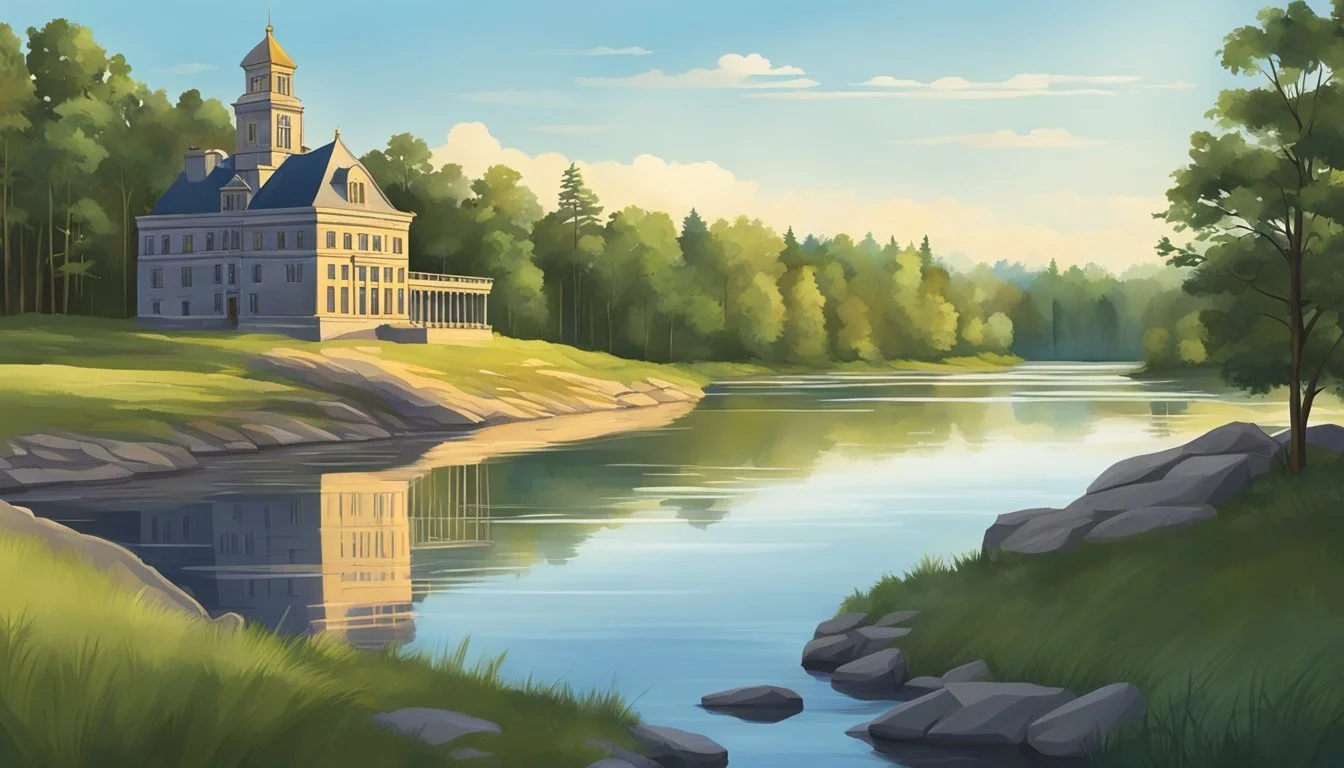8 Revealing Documentaries About Minnesota
Uncovering the North Star State's Hidden Stories
Minnesota's rich history and diverse culture offer fertile ground for documentary filmmakers. From its Native American heritage to its modern urban landscapes, the state has been the subject of numerous insightful and revealing documentaries over the years.
These eight documentaries provide viewers with a deeper understanding of Minnesota's unique character, challenges, and triumphs. They explore topics ranging from racial injustice and resistance to the state's natural beauty and artistic contributions. By shining a light on both well-known and obscure stories, these films offer a nuanced portrait of the North Star State and its people.
1) The Last Days of Shakopee
"The Last Days of Shakopee" is a powerful documentary that explores the rich history and cultural significance of the Shakopee Mdewakanton Sioux Community in Minnesota. The film focuses on the tribe's efforts to preserve their heritage and traditions in the face of modern challenges.
The documentary showcases the construction of Hoċokata Ti, a cultural center that opened in July after three years of building. This 92,500-square-foot structure represents the culmination of a 30-year dream for the Shakopee community.
Viewers gain insight into the tribe's struggles and triumphs as they work to maintain their identity and pass down their knowledge to future generations. The film highlights the importance of language preservation, traditional practices, and community bonds.
Through interviews with tribal elders and community leaders, the documentary paints a vivid picture of Shakopee life. It also examines the impact of outside influences on the tribe's way of life and their efforts to adapt while staying true to their roots.
"The Last Days of Shakopee" serves as a testament to the resilience and determination of the Shakopee Mdewakanton Sioux Community. It offers a rare glimpse into their world and the ongoing efforts to ensure their culture thrives in the modern era.
2) Streets of Minneapolis
"The Baldies" documentary sheds light on a little-known chapter of Minneapolis history. It explores the story of a multiracial skinhead group that fought against Neo-Nazis in the city's streets during the 1980s.
The film, produced by Twin Cities PBS, offers viewers a glimpse into the urban landscape of Minneapolis at that time. It reveals how The Baldies organized themselves to confront racist elements in their community.
This documentary provides insight into the social dynamics and tensions that existed in Minneapolis during a turbulent period. It showcases how grassroots activism emerged in response to the presence of hate groups.
The story of The Baldies extends beyond their initial formation. The group eventually evolved into Anti-Racist Action (ARA), a nationwide network of activists committed to combating racism.
By focusing on this specific group, the documentary paints a vivid picture of Minneapolis street life in the 1980s. It captures the atmosphere of conflict and resistance that characterized certain areas of the city during that era.
3) Secrets of Lake Superior
Lake Superior, the largest of the Great Lakes, holds many mysteries beneath its surface. The documentary "Freshwater" explores this vast body of water along Minnesota's North Shore.
Directed by Ian Planchon and Lynn Melling, the film delves into the cold depths of Lake Superior. It reveals that despite containing 10% of Earth's freshwater, much of the lake remains unexplored.
The documentary showcases the diverse group of people who interact with the lake. Surfers brave its waves, while scientists study its ecosystem. These individuals have a unique understanding of Lake Superior's power and significance.
"Freshwater" captures the beauty and force of the lake through stunning cinematography. It offers viewers a rare glimpse into the underwater world of Lake Superior.
The film premiered at the NorShor Theater in Duluth, Minnesota in February 2022. It has since garnered attention for its exploration of this important freshwater resource.
Through interviews and footage, "Freshwater" sheds light on the ecological importance of Lake Superior. It also highlights the need for conservation efforts to protect this natural wonder.
4) Minnesota's Hidden Gems
Minnesota boasts numerous hidden gems that offer unique experiences for adventurous travelers. George Crosby Manitou State Park stands out as a true backcountry destination, providing spectacular hiking trails away from the crowds.
Old Mill State Park on the Middle River offers scenic beauty in a tranquil setting. The park's peaceful atmosphere makes it an ideal spot for nature lovers seeking solitude.
Savanna Portage State Park in McGregor is an often-overlooked treasure. This park combines natural beauty with rich historical significance, appealing to both outdoor enthusiasts and history buffs.
The state's hidden gems extend beyond parks. Minneapolis is home to what's dubbed "The Quietest Place on Earth," an anechoic chamber at Orfield Laboratories that provides a unique sensory experience.
These lesser-known attractions showcase Minnesota's diverse landscapes and cultural offerings. They provide opportunities to explore the state's natural beauty and heritage without the crowds typically found at more popular destinations.
5) Voices From the Iron Range
"Voices From the Iron Range" is a documentary that captures the essence of life in Minnesota's Iron Range region. The film showcases the rich history and cultural heritage of this unique area, known for its iron ore mining industry.
Through interviews with local residents, the documentary provides firsthand accounts of the challenges and triumphs experienced by Iron Range communities. It explores the impact of mining on the region's economy and environment over the decades.
The film delves into the diverse ethnic backgrounds of Iron Range inhabitants, including immigrants who came to work in the mines. It highlights their contributions to the area's distinct culture and traditions.
"Voices From the Iron Range" also examines the economic shifts and adaptations the region has undergone as mining practices evolved. The documentary presents a nuanced portrait of a resilient community facing both opportunities and obstacles.
By featuring personal stories and archival footage, the film offers viewers a comprehensive look at the Iron Range's past and present. It serves as a valuable historical record and a tribute to the people who have shaped this important part of Minnesota's landscape.
6) Mysteries of the Twin Cities
The Twin Cities have been home to several intriguing mysteries over the years. One of the most perplexing cases involves the disappearance of the Klein brothers in 1951.
Kenny, David, and Danny Klein, ages 8, 6, and 4, vanished without a trace after leaving for Farview Park in Minneapolis. Despite extensive searches, their fate remains unknown to this day.
Another notable case that captured public attention was a murder mystery featured on Investigation Discovery. The documentary explored a notorious Twin Cities homicide, shedding light on the complexities of the investigation.
Minnesota's landscapes and culture have also inspired numerous fictional murder mysteries. Local authors have used settings ranging from the North Shore to the State Fair as backdrops for their chilling tales of crime and suspense.
These real and fictional mysteries continue to fascinate residents and visitors alike, adding an element of intrigue to the Twin Cities' rich history and cultural tapestry.
7) Homestead in Hennepin
"Homestead in Hennepin" explores the intricacies of homestead property status in Hennepin County, Minnesota. The documentary sheds light on the requirements and benefits of homestead classification for property owners.
Viewers learn about the eligibility criteria for homestead status, including property ownership and residency requirements. The film explains how homeowners must live in the property and have it titled in their name, not as a business entity.
The documentary covers the application process, detailing the necessary documentation and deadlines. It highlights the role of the Hennepin County Assessor's office in managing homestead applications and assessments.
Interviews with county officials and homeowners provide personal perspectives on the homestead program's impact. The film examines how homestead status affects property taxes and potentially provides financial relief to qualifying residents.
"Homestead in Hennepin" also addresses common misconceptions about the program and offers guidance on maintaining homestead status. It serves as an informative resource for both new and long-time Hennepin County residents navigating property ownership.
8) Lost in the Boundary Waters
"Lost in the Boundary Waters" is a compelling documentary that explores the rugged wilderness of northern Minnesota. The film showcases the breathtaking beauty and challenges of the Boundary Waters Canoe Area Wilderness.
Viewers follow the journey of experienced paddlers as they navigate the pristine lakes and dense forests. The documentary highlights the area's rich history, including its importance to Indigenous peoples and early explorers.
The film captures the unique ecosystem of the Boundary Waters, featuring diverse wildlife and plant species. It also addresses conservation efforts and the ongoing debate surrounding the protection of this natural treasure.
Through stunning cinematography, "Lost in the Boundary Waters" immerses audiences in the serene yet unpredictable environment. The documentary provides insight into wilderness survival skills and the physical demands of extended canoe trips.
Interviews with local residents, conservationists, and outdoor enthusiasts offer varied perspectives on the region's significance. The film serves as both an educational resource and an invitation to experience the Boundary Waters firsthand.
Historical Perspectives
Minnesota's rich history has been captured through documentaries that offer unique insights into the state's past. These films explore pivotal events and cultural shifts that have shaped the North Star State over time.
Origins of Documentary Filmmaking in Minnesota
Minnesota's documentary tradition dates back to the early 20th century. In the 1920s, filmmakers began recording daily life and significant events across the state. The Minnesota Historical Society played a crucial role in preserving early footage.
Local television stations contributed to documentary production in the 1950s and 1960s. KTCA (now TPT) launched in 1957, creating educational programs about Minnesota's history and culture.
The 1970s saw an increase in independent documentarians. They tackled subjects like environmental issues, Native American rights, and urban development. These films often provided alternative perspectives to mainstream narratives.
Key Historical Events in Minnesota
Documentaries have chronicled numerous pivotal moments in Minnesota's past. The 1862 U.S.-Dakota War has been the subject of several films, examining its causes and lasting impact.
Labor movements feature prominently in Minnesota documentaries. Films cover events like the 1934 Minneapolis Teamsters Strike and the formation of the Minnesota Farmer-Labor Party.
Environmental topics are well-represented. Documentaries explore the history of mining on the Iron Range and efforts to protect the Boundary Waters Canoe Area Wilderness.
Civil rights struggles in Minnesota have been documented on film. These include the American Indian Movement's activism and the state's role in the national civil rights movement.
Cultural Insights
Minnesota's cultural landscape is a vibrant tapestry of diverse communities and artistic expression. The state's rich heritage is showcased through documentaries that explore its multifaceted identity.
Minnesota's Diverse Communities
Minnesota has become home to a wide array of cultural groups. German and Scandinavian influences are deeply rooted in the state's history. Recent decades have seen an influx of immigrants from Mexico, Laos, Vietnam, and Somalia.
This cultural diversity is reflected in local cuisines, festivals, and community organizations. The Twin Cities area, in particular, hosts numerous cultural events celebrating this mix of traditions.
Documentaries have highlighted the experiences of various communities. They shed light on challenges faced by newcomers and their contributions to Minnesota's social fabric.
Art and Music Scene
Minnesota's art and music scene is thriving and diverse. The state has a strong tradition of supporting the arts, partly thanks to funding from the Minnesota Arts & Cultural Heritage Fund.
Minneapolis-St. Paul boasts world-class museums, theaters, and music venues. The Walker Art Center and Guthrie Theater are renowned cultural institutions.
Local music has gained national recognition, from the iconic sounds of Prince to the indie rock scene. Folk and bluegrass traditions remain strong, especially in rural areas.
Documentaries have explored Minnesota's rural polka scene and other unique musical subcultures. They provide insight into how art and music shape the state's cultural identity.





